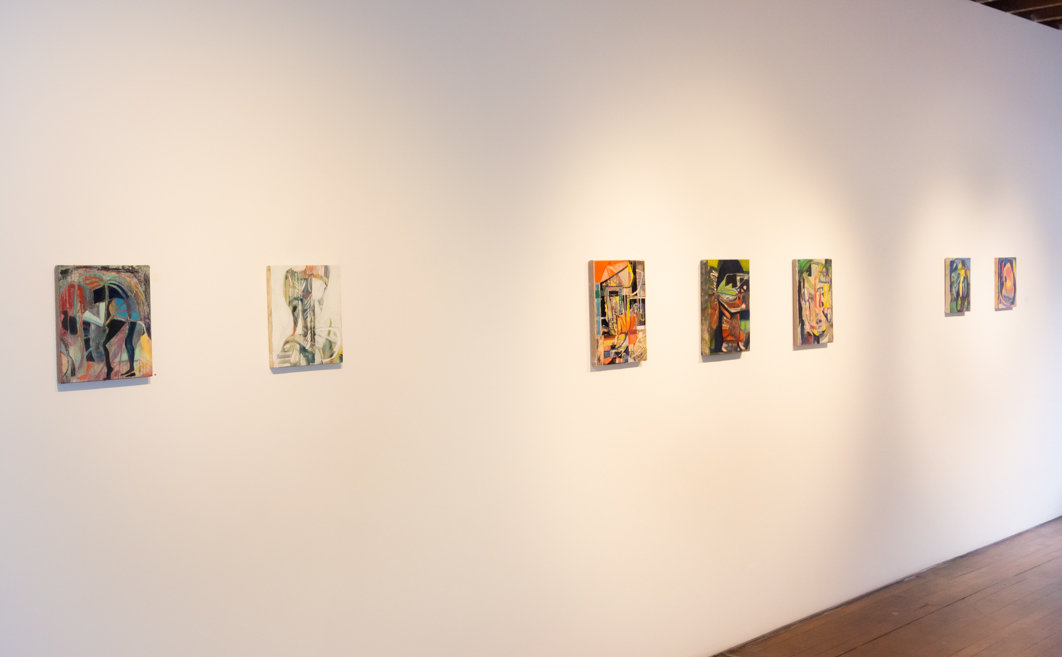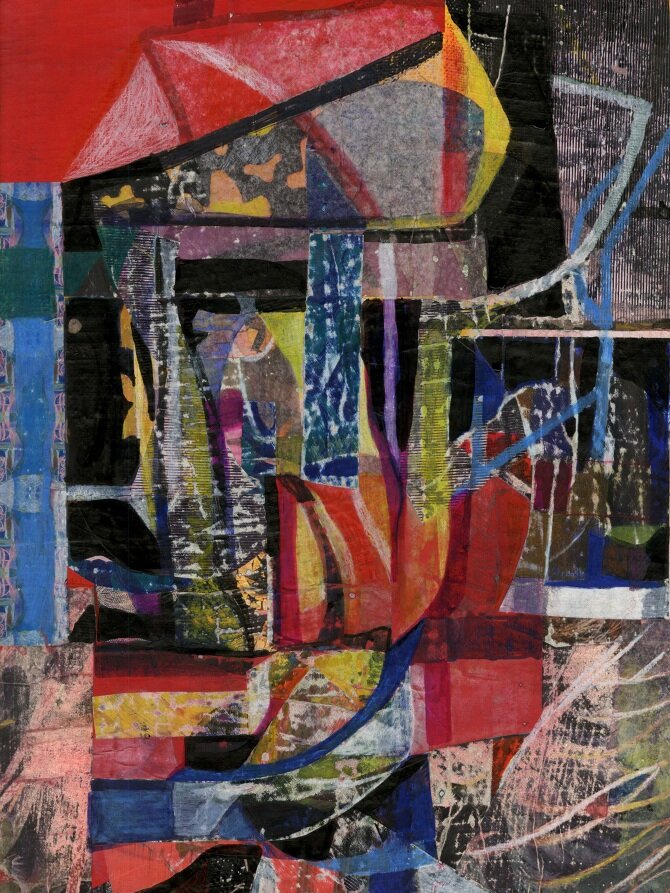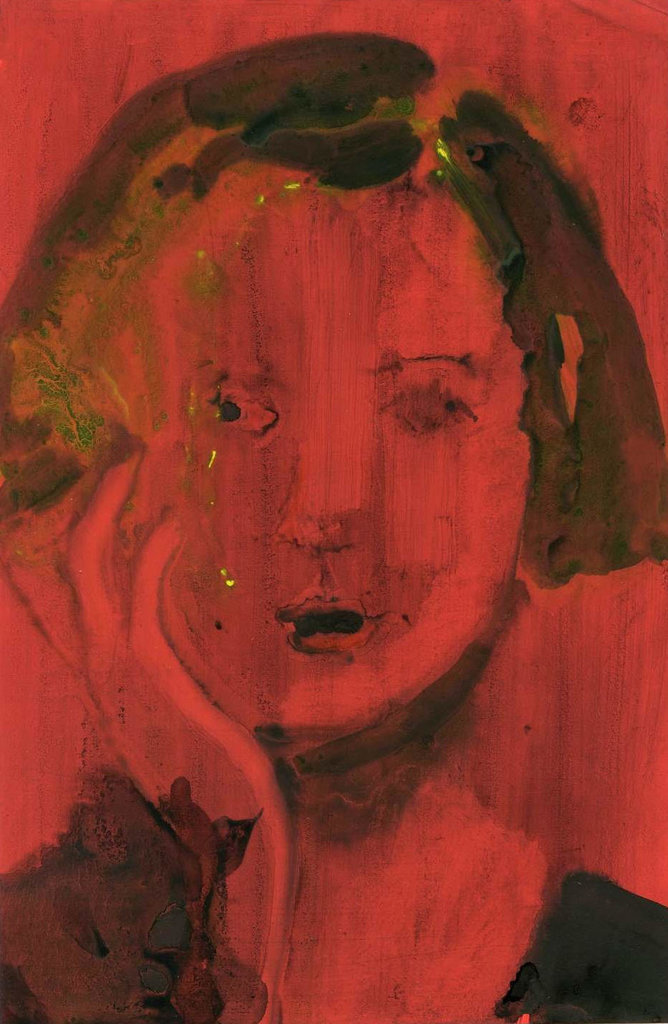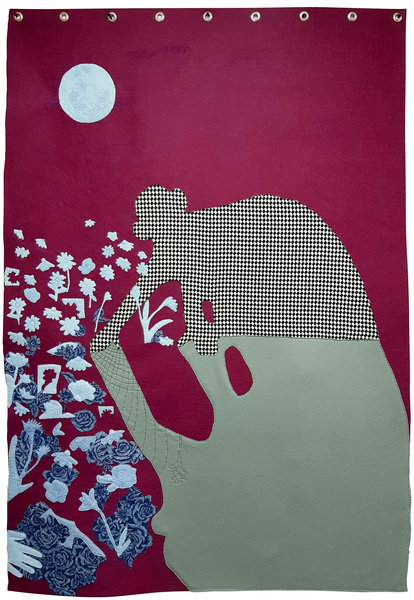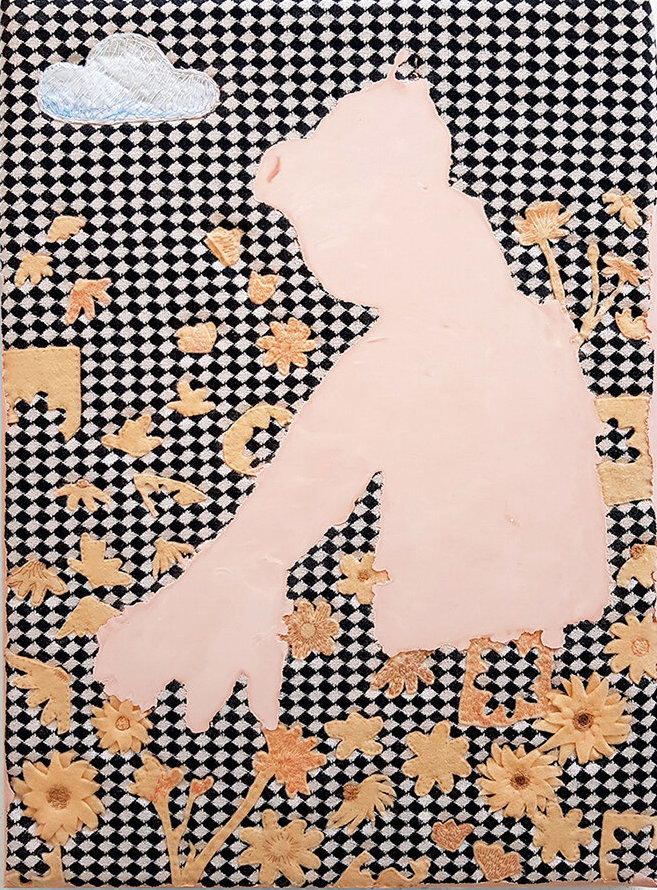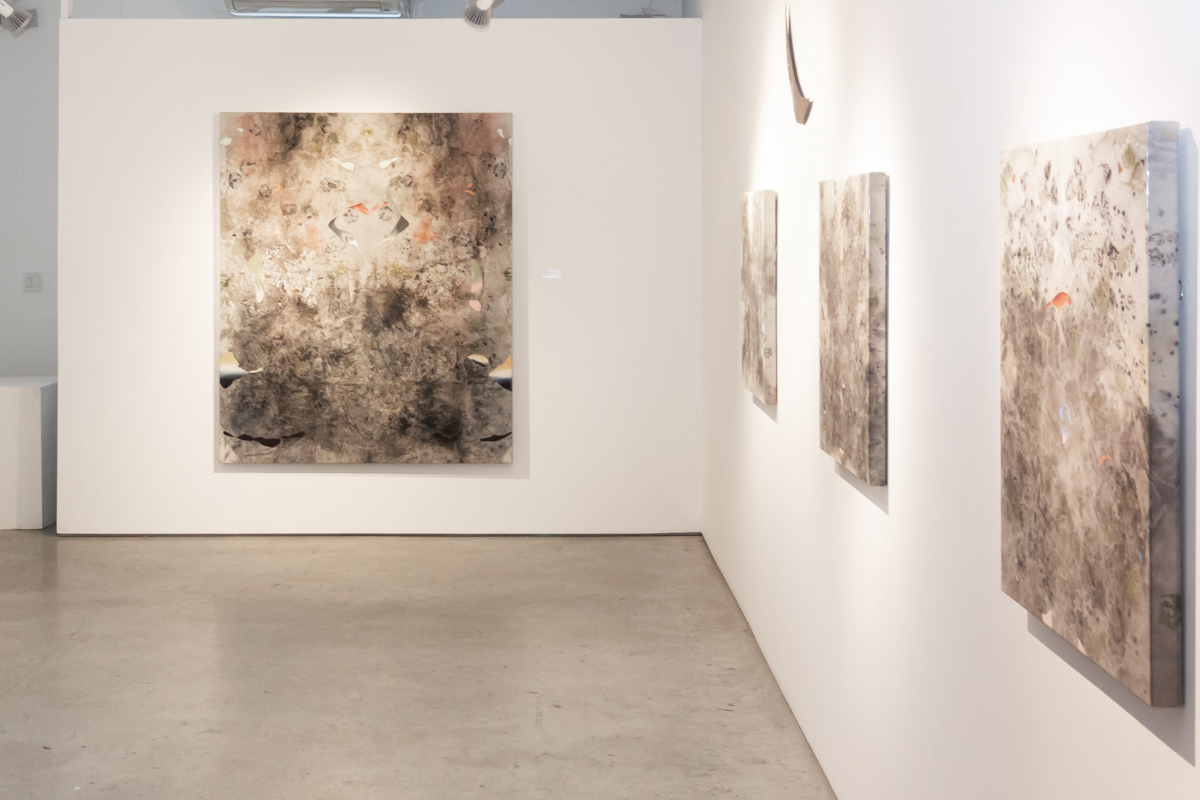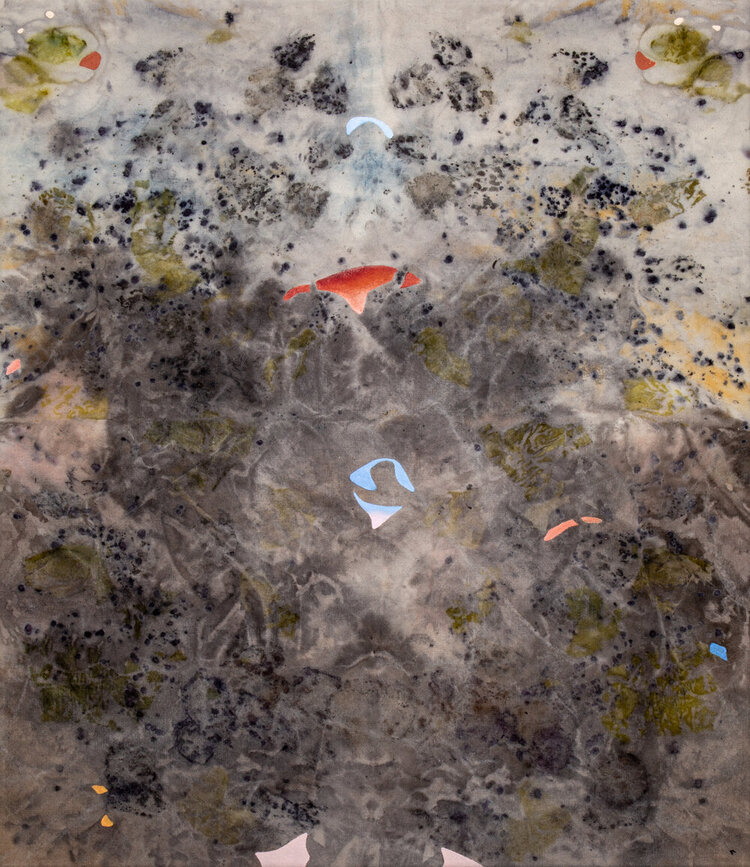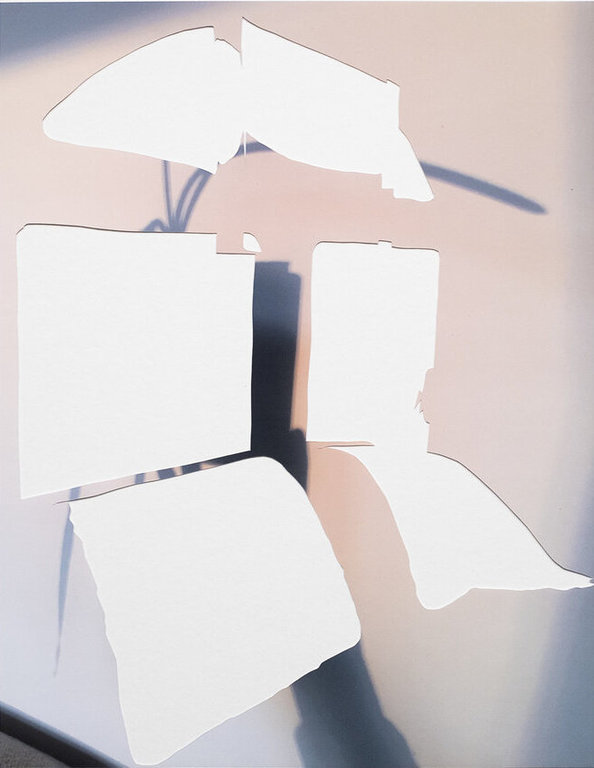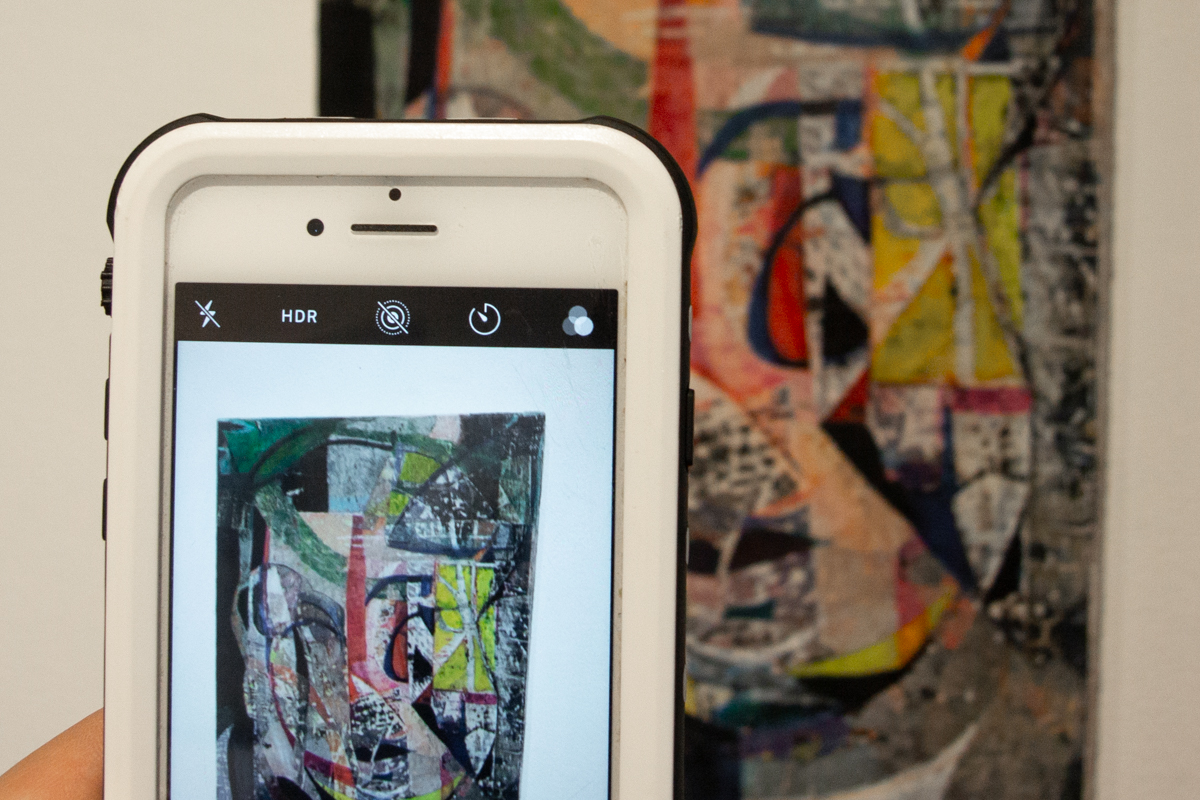For their current exhibition, General Hardware Contemporary’s director Niki Dracos has invited the writer Tatum Dooley to act as guest curator. Dooley has selected work rooted in the conventions of two-dimensional wall art such as painting and photography, but which also manipulates surfaces and materials to push them beyond these conventions.
The show is titled Fossil Record. Think of fossils: they contain within them the narrative of how they came to be; they’re discovered through the exposure of sedimentary layers; they are things that once were pulpy and soft and are now solid and fixed. The title is metaphoric for the curatorial theme, for the ideas that stitch this show together.
At the front of the gallery are works by Margaux Smith. Their small scale, intricate detail, and generous spacing all work together to draw you in close. It’s an intimate experience. They’re telling a story just to you, rather than broadcasting across the room.
Installation view with paintings by Margaux Smith. Photo: Mikael Sandblom
The paintings are dense, rich, and layered. Strata of paint and collage partially reveal the process of how they were made. The pictures bridge abstraction and figuration. In some pieces you can see arms and legs or parts of faces; in others it’s hard to see any particular subject. I found myself switching between trying to decipher the content and enjoying the lush surfaces of the work
Margaux Smith, Shelter, 2019, mixed media on linen over panel, 16” x 12”.
Smith has also produced a series of engaging portrait paintings on paper. Only a few of these are shown on the walls but there are more, kept in a portfolio in the office. You should ask to see those!
Margaux Smith, Red Portrait, 2019, water colour on paper, 9” x 5.75”
Moving on to the second gallery, you’ll find a couple of pieces by Stanzie Tooth. The larger one, called Mondgebrut is a felt wall hanging with other fabric elements sewn on. It is loosely draped in front of the wall, attached by nails through a row of heavy-duty grommets along the top edge. This hardware gives a sense of weight to the piece which is augmented by a subtle but important aural effect. The gallery has concrete floors. You normally hear your own footsteps, but as you approach this piece you walk into an auditory dead-zone. Everything grows quieter. The prominent ears of the crouching figure are telling you that this is a piece that you need to listen to as well as look at.
Stanzie Tooth, Mondgebrut, 2020, fibre (hand-stitched), 64” x 42”
Rooting Up is another piece by Tooth. As in the felt hanging, there is an outline of a figure reaching down to a field of flowers and some of the same fabric has been used. On close inspection, you’ll discover similar sewn details on the flowers. In this piece however, the fabric is held together from behind by pink tinted plaster. Tooth’s casting process leads to interesting effects whereby the plaster bleeds through and flows around the front of the fabric, making the figure vague and randomly defined.
Stanzie Tooth, Rooting Up, 2019, plaster, felt (hand-stitched) and pigment, 22” x 20” x .75”
At the far end of the gallery are several works by Gillian King. At first, it’s unclear what they are made of. Are they blocks of stone or perhaps large encaustics? As you approach, you discover that they are not paint on canvas but rather pigment in canvas.
Installation view with Gillian King, Cecropia, 2019, acrylic and various plant materials on canvas, 72″ x 60″ (facing). Photo: Mikael Sandblom
King has developed a unique method to create these surfaces. She arranges dirt, rusty metal and plant material over the canvas surface, folds and ties it into a package and then lets the whole thing ‘cook’, creating the stains. Her method of wrapping and folding imparts an almost symmetrical patterning in the material. The canvases are taut, smoothly stretched, and the edges are left exposed which contributes to their solid slab-of-material quality. Picking up from the geometry in the stains, King has added small, crisp, organically shaped painted elements that seem to float up over the surface.
Gillian King, Acleris, 2019, acrylic, rust sediments and various plant materials on canvas, 30″ x 26″
Also, in the rear gallery space, are works by Fiona Freemark. Her work consists of photographs that have been carefully cut and hung inside shadowboxes. They hang loosely in their frames making one aware of the thin, fragile nature of photographic paper. If they had been mounted flat, much of their impact would be lost.
Fiona Freemark Sunset/Window (+ Space), 2019. hand-cut photograph on Arches paper, 15” x 12”
The shapes of the cuts are defined by the geometry of another image that is not shown. Sometimes, as in the piece Apple Tree / Clouds (Fool’s Paradise), we can readily identify the cutout geometry. But, regarding the other four pieces, I’ve hunted for a solution, trying one idea after another, attempting to decipher what these shapes could be, and remained stumped. They offer a sprightly resistance to interpretation.
Installation view with Fiona Freemark’s hand-cut photographs on Arches paper. Photo: Mikael Sandblom
For most of us, the art we encounter is predominantly online or in print. It’s easy to believe that what we see through the medium is the full extent of the experience. Fossil Record is a show that underscores the value of seeing the work firsthand. How big is it? What are the surfaces like? How does it change at various distances and angles? Is it reflective or flat? How does it engage our other senses? When we rely on perfectly flat images scaled to equal sizes, we are not aware of all the other aspects that the artist intended for us to experience.
What we see on screens is not the full experience! Photo: Mikael Sandblom
Mikael Sandblom
Featured image: Margaux Smith, Shelter, 2019, mixed media on linen over panel, 16” x 12” – detail
*Exhibition information: January 18 – February 22, 2020, General Hardware Contemporary, Front Gallery, 1520 Queen Street West, Toronto. Gallery hours: Wed – Sat, 12 – 6 pm.

